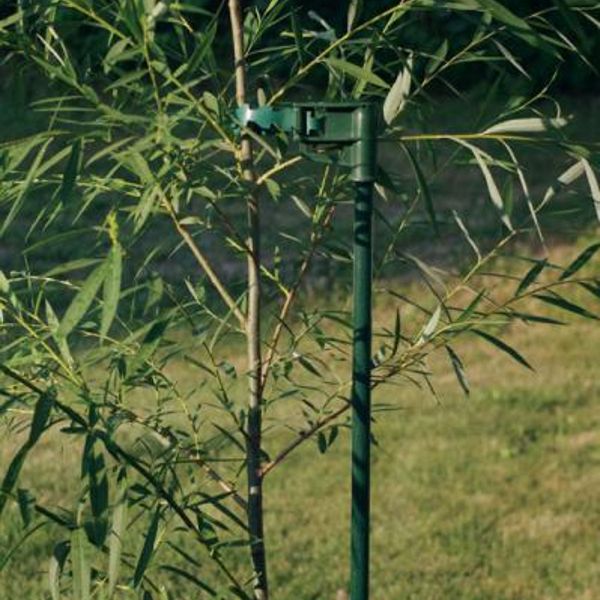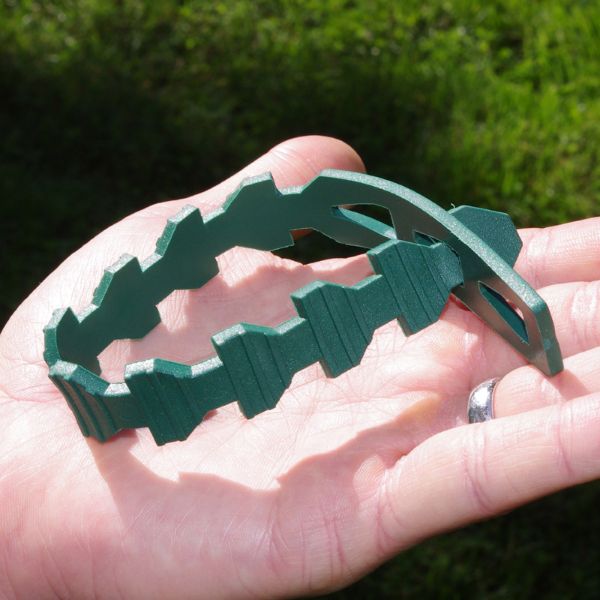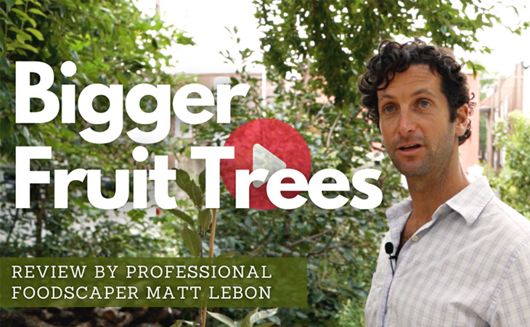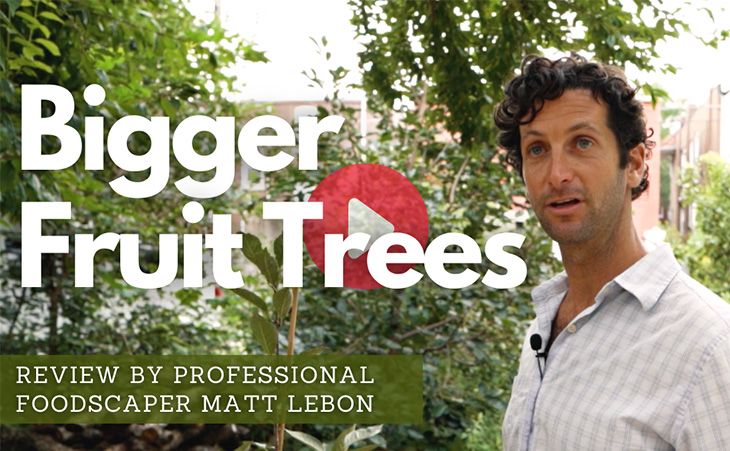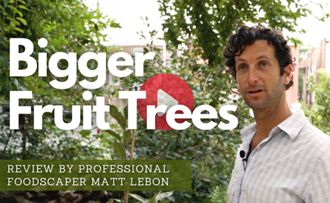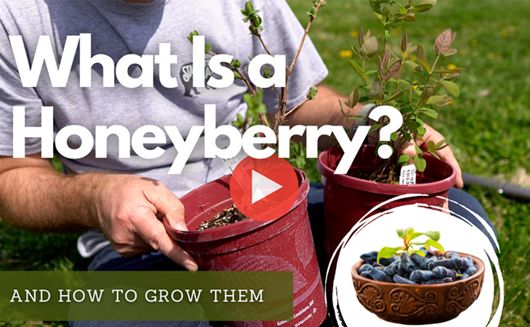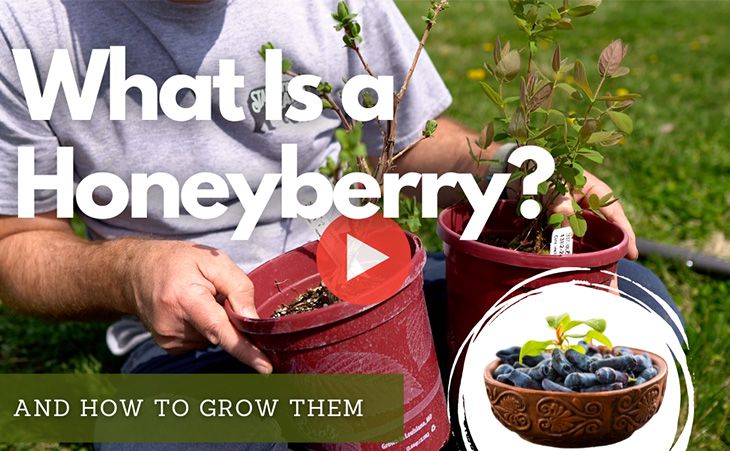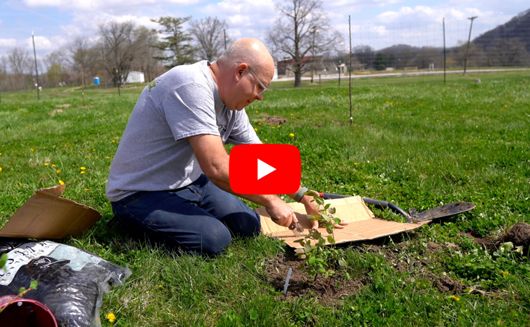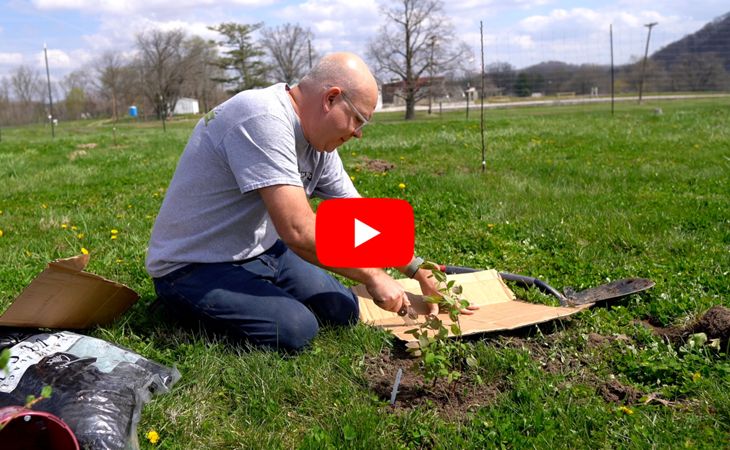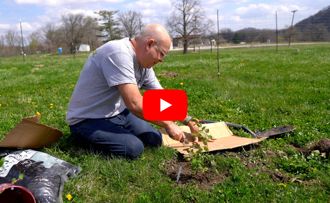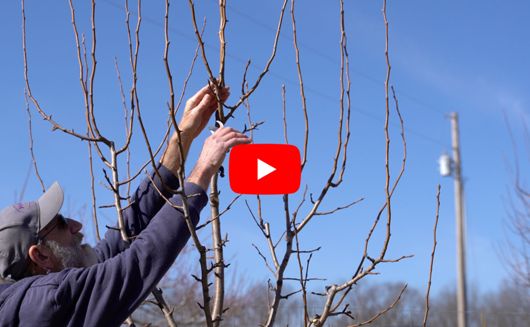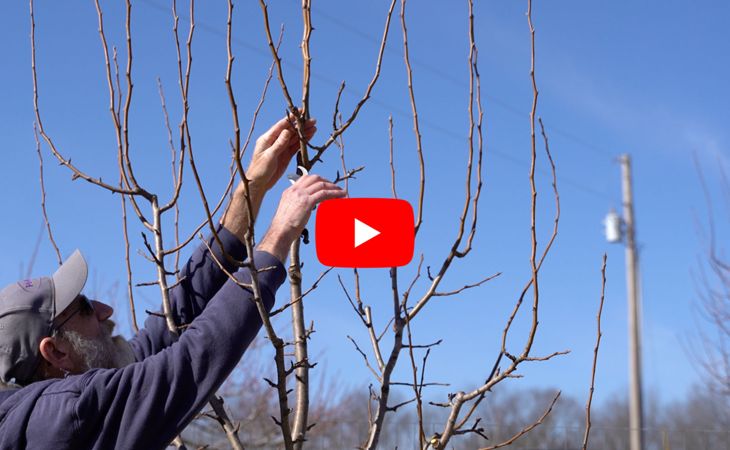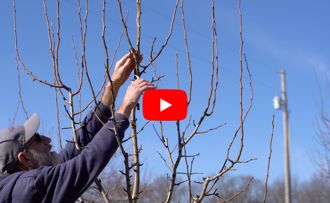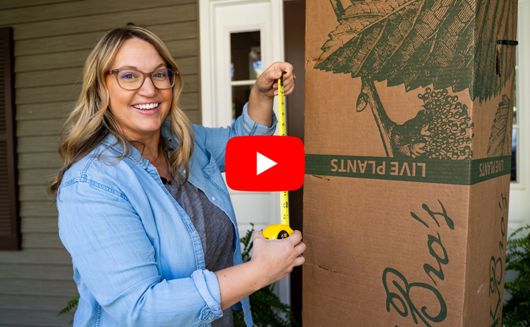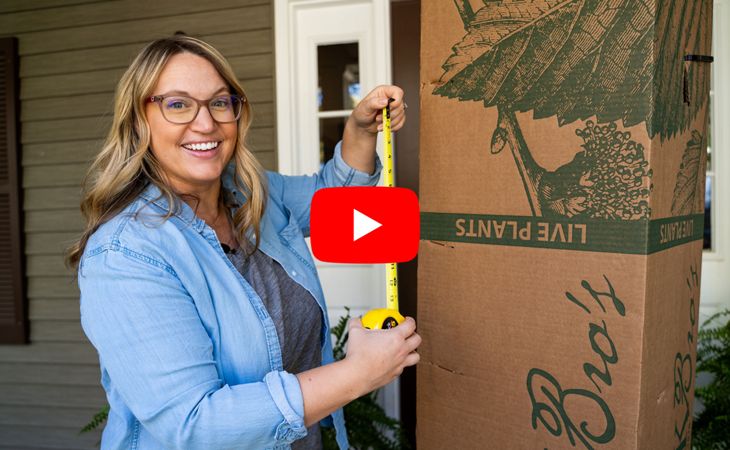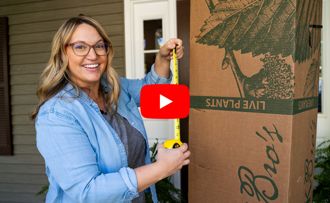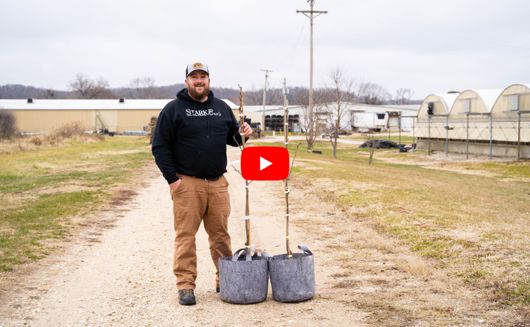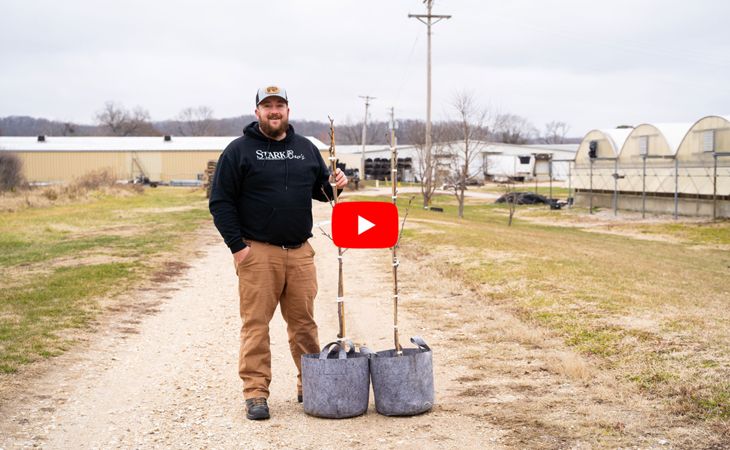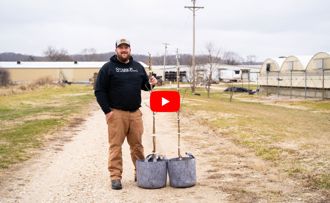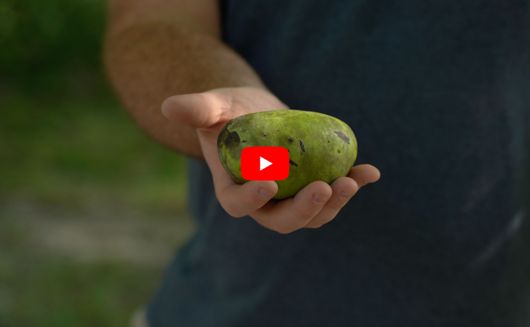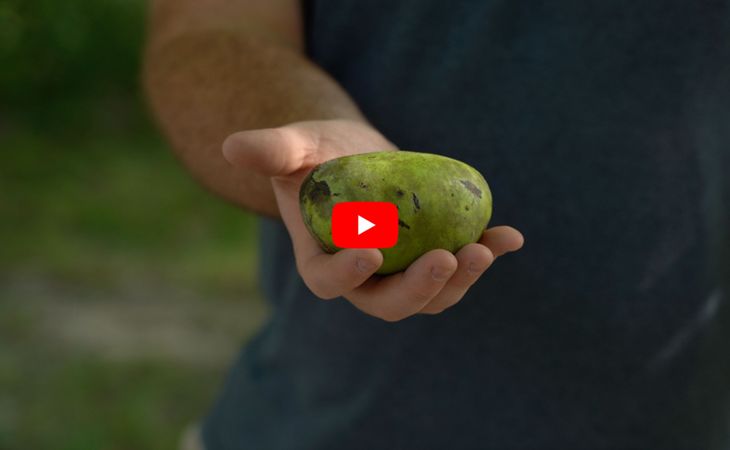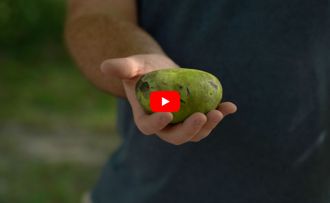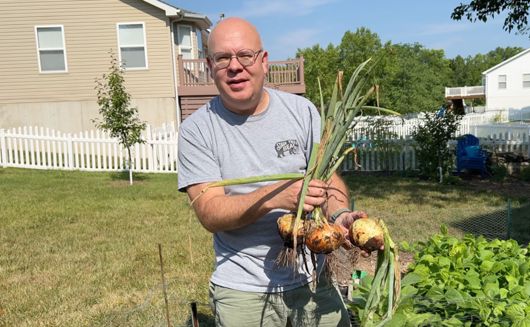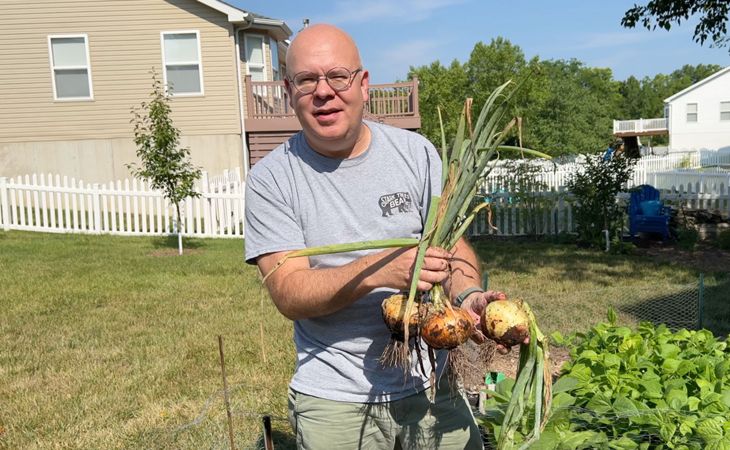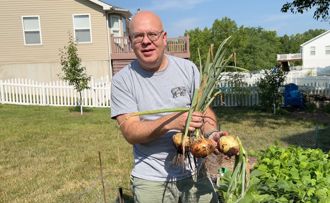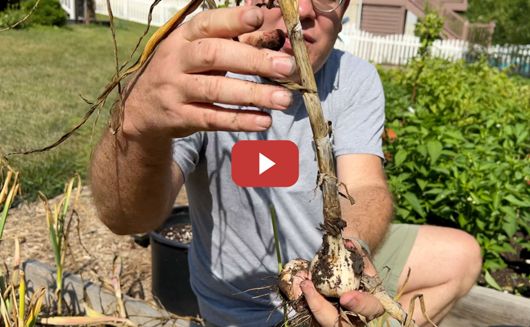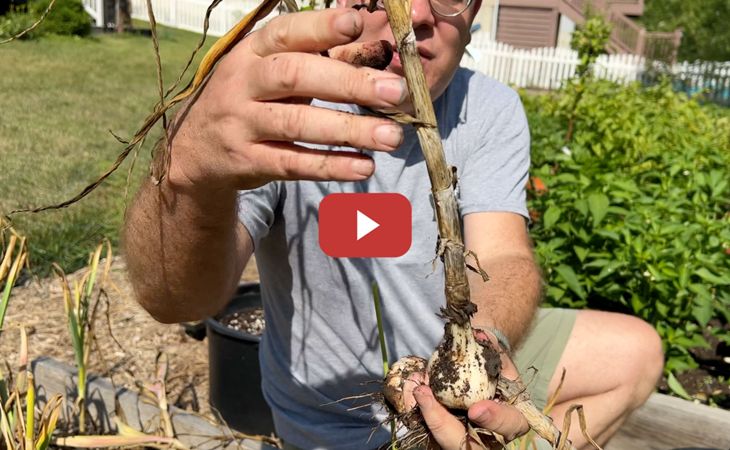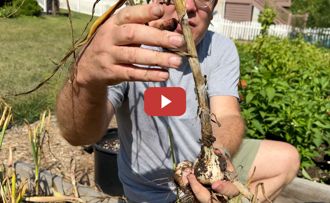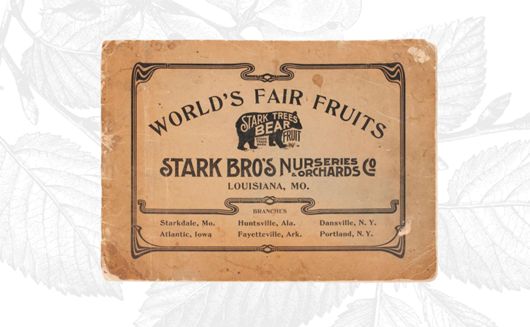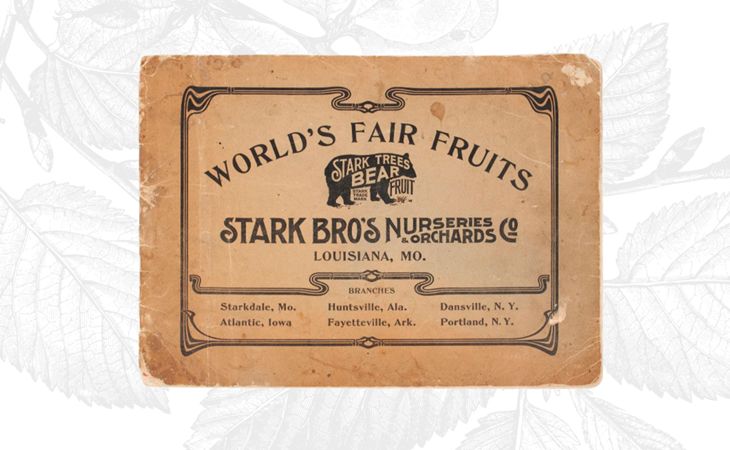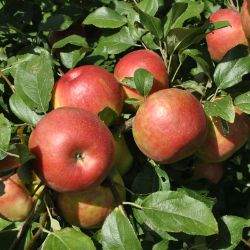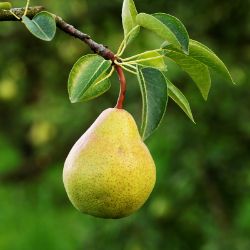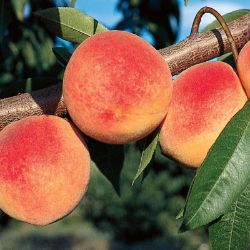All About Tree Stakes

Why Trees Need To Be Staked
Staking your tree for the first two years of its life is not just to keep it straight and pretty. The main reason for staking young trees early on, especially dwarf and bare-root trees, is to prevent a strong windstorm from either knocking the tree over, or uprooting it.
We cannot emphasize enough how critical tree stakes are to young fruit trees. They haven’t had the chance to grow their roots into the ground to create good “anchorage,” which holds your tree in the ground when the wind blows and/or the ground becomes oversaturated with moisture. The root system of dwarf trees, which is smaller and less ground-penetrating by nature, is even more vulnerable.
We cannot emphasize enough how critical tree stakes are to young fruit trees. They haven’t had the chance to grow their roots into the ground to create good “anchorage,” which holds your tree in the ground when the wind blows and/or the ground becomes oversaturated with moisture. The root system of dwarf trees, which is smaller and less ground-penetrating by nature, is even more vulnerable.
Young trees can also develop a syndrome called “crowbar hole”. If a newly planted tree sways back and forth in the wind too much, over time the friction of the trunk against the planting hole will naturally widen the top of the hole and wiggle the tree loose. You can see this phenomenon in action when you remove tall tomato plants in the fall, as you rock them back and forth until they pull free. The physics are the same for a dwarf tree with shallow anchorage or a bare-root tree that hasn’t sufficiently grabbed onto to its new underground home yet. The gap created by the rocking motion will eventually collect water that will just sit on top of the roots, very likely causing rot, and the tree will be lost.
It’s a good idea to install a tree stake at the same time you plant or very shortly thereafter; if you wait to install the stake at a later date, the act of pushing the stake into the ground may disturb, or even damage, the tree’s roots. Taking a few minutes to stake your new trees just after you plant them is well worth it.
Installing a Stark Bro's Tree Stake
- Once your tree is planted, place the tree stake about one foot from the trunk, on the prevailing-wind side.
- With your foot, push the base all the way down, until it is flush with the ground.
- Insert the end of the flexible strap into the top front of the stake, and then push it back out through an open slot on the top of the stake.
- Pull both ends of the strap loop gently around the tree trunk at about the same height as the top of the stake, and slip the arrow-shaped end of the strap through one of the holes on the opposite side of the strap to complete the loop.
- The strap is adjustable; please be careful to choose the hole that secures the tree in an upright position. The trunk should not be leaning either toward or away from the stake; it should be parallel, but free to sway a little. In very windy or high-elevation locations, you may want to install another stake directly opposite the first stake, or even create a triangular arrangement, using tree stakes as the tree grows older and taller.
- The open slot just under the top of the tree stake is for your tree tag.
- Article Categories:
- Product Features
- Video

